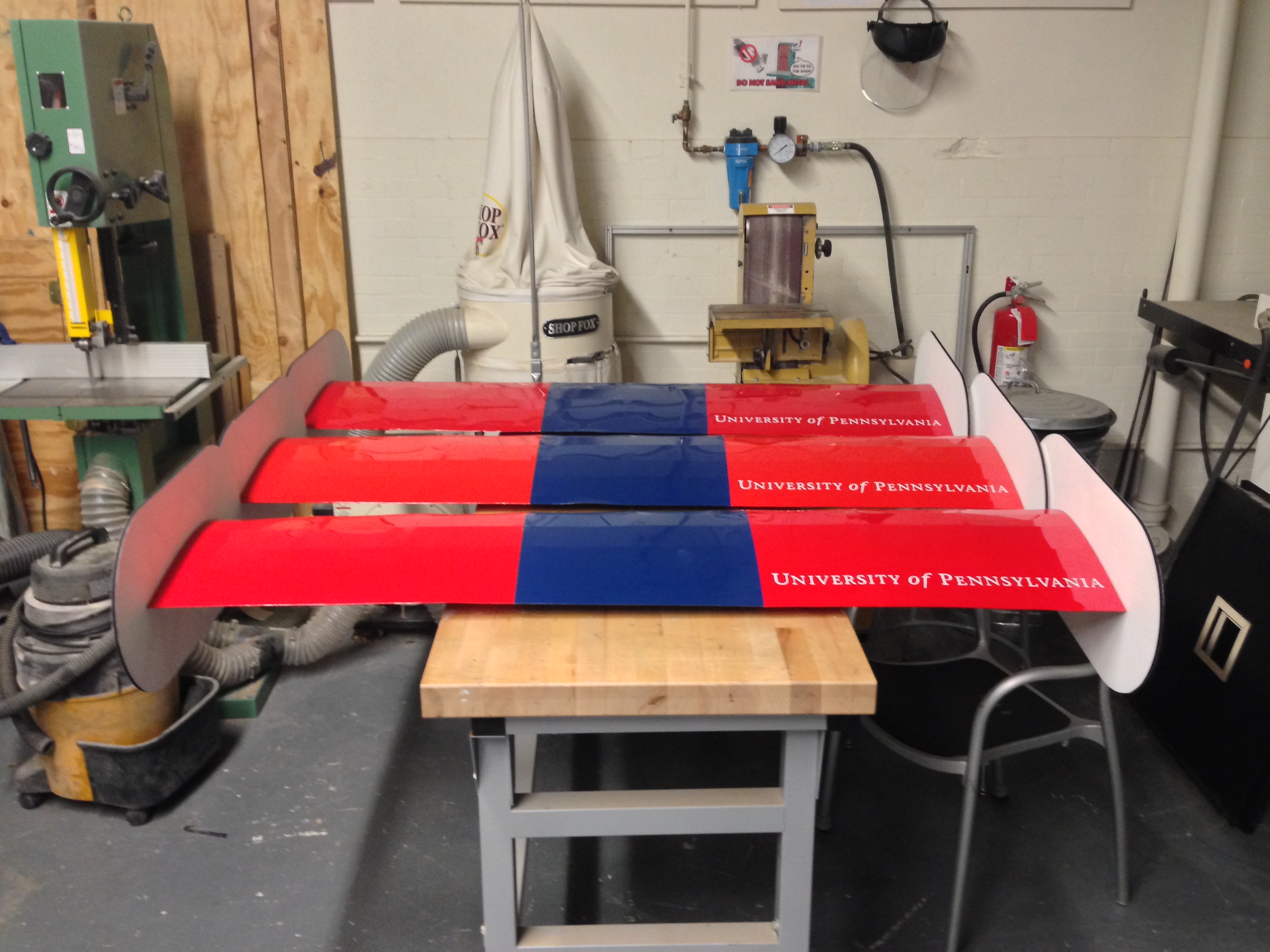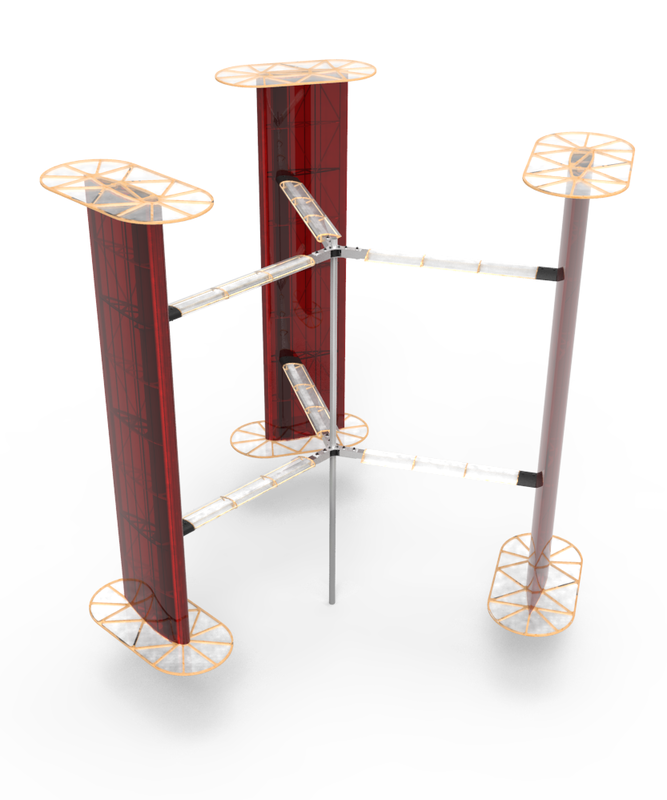Vertical Axis Wind Turbine
One of my design projects at the University of Pennsylvania involved designing and bulding a vertical axis wind turbine to generate electical power. We worked in a team of 3 and the goal was to maximise electrical power generation. The design process involved several steps including: predicting turbine performance by testing a small-scale model, designing a transmission between the turbine and DC motor used as a generator and selecting appropriate electrical load (resistor) to which the power was delivered.
First of all, we had to decide whether we will build a drag-based Savonius or a lift-based Darrieus wind turbine. The differences in the design between the two made the Darrieus wind turbine more difficult to manufacture but also capable of generating more power. Because of an extra challenge and as maximising power generation was the goal of the task, we decided to build thex lift-based turbine.



